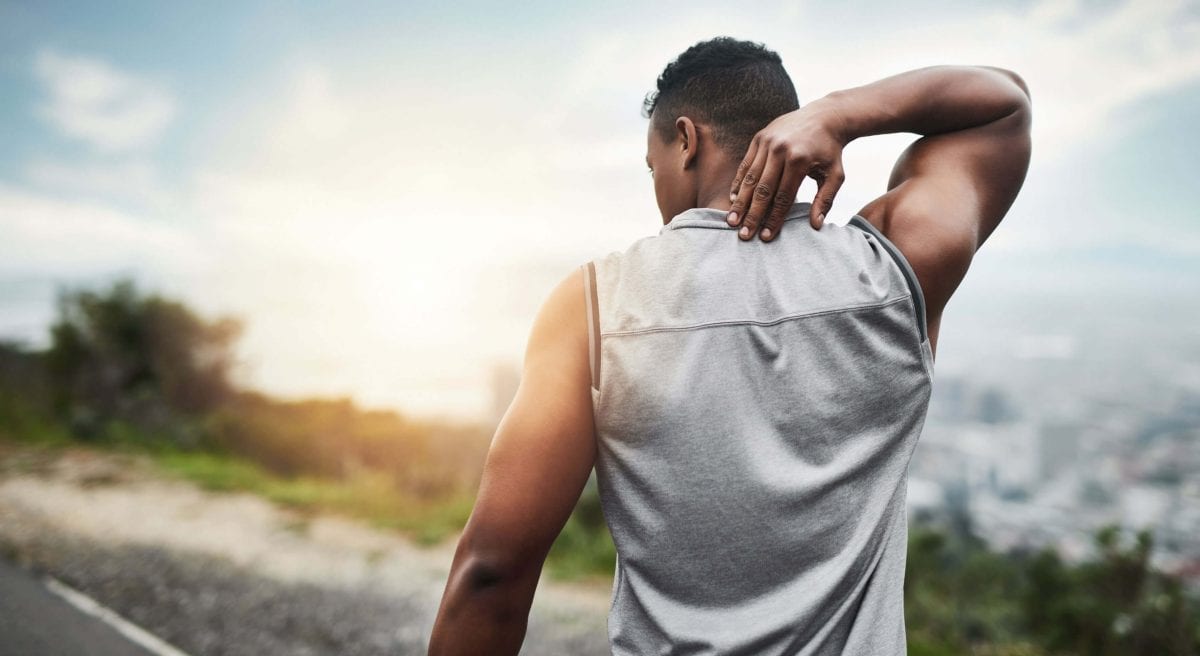Pain and exercise have an interesting relationship. To break a plateau or even maintain your current fitness level, especially in the case of strength training, you have to accept a certain level of pain, inflammation, and soreness. But that doesn’t mean you have to go it alone and CBD and exercise can be beneficial to your routine..
Thanks to natural supplements like cannabidiol, you can safely and effectively address workout-related soreness and inflammation without risking dependence or harsh side effects.
Cannabidiol, or CBD, is a non-intoxicating constituent of the cannabis plant that works with your body’s existing “response team” for sore and inflamed tissues.
CBD may also improve sleep quality, nausea, anxiety, and many other issues, but for now, we will focus on how it can regulate workout-related soreness.
First, we’ll review the potential of CBD as an exercise-friendly supplement from a consumer demand perspective, and then, we’ll briefly explain how it works on a neurochemical level.
Are People Already Taking CBD for Fitness?
According to The CBD Insider 2019 US CBD Consumer Report, a demographically comprehensive survey involving more than 1,000 respondents from across the US, healthcare consumers are gradually turning toward CBD as a safe recovery supplement.
Among the current CBD consumers surveyed, 41% reported that they use CBD to address muscle soreness and recovery.
Within that group, 70.5% reported that CBD was “very effective” or “extremely effective” in meeting this expectation.
Further underlining CBD’s ability to mitigate discomfort, nearly one in ten (8.1%) current consumers reported replacing a prescription opiate with CBD.
One substantial deduction we can make from this data, a point that is being reinforced by research as we speak, is that CBD is more suitable for long-term use when managing soreness in muscle tissue throughout the body.
In other words, it’s not going to outperform opioids two days after having your knee replaced, but it may help people who frequently suffer from sore and inflamed muscles avoid long-term opioid use.
Research on CBD for Soreness and Inflammation
Depending on the nature of the soreness and inflammation, how long it lasts, and which systems it affects, your body has access to many neural pathways that can fight it.
A study entitled “A Cross-Sectional Study of Cannabidiol Users” in Cannabis and Cannabinoid Research found that CBD helps with inflammatory processes.
This is made possible through what is called the endocannabinoid system, a fancy term for two nerve receptors (CB1 and CB2) that are stimulated by cannabinoids, i.e., cannabidiol and the 100+ other substances in cannabis.
The endocannabinoid system helps regulate inflammation, and CBD stimulates this action by acting on CB1.
Your body already produces its own “brand” of cannabinoids (called endocannabinoids) that mirror CBD’s effects and its psychoactive cousin THC; this is why CBD is so lean when it comes to side effects.
We already produce and use endocannabinoids, for example, to purge useless information from our short-term memories and make room for more relevant data.
More relevant in this case, of course, is the ability of CBD to jumpstart your nervous system into fighting off soreness and inflammation as you progress through a workout regimen or start one from scratch.
Application Tips for New CBD Takers
Finally, let’s take a practical look at what CBD for workout-related soreness and inflammation could look like in terms of form, dosage, and expected results.
If your discomfort is localized to one or two problem areas, a topical cream might be best.
Topical CBD acts quickly and directly on the application area, bypassing liver metabolism.
If your problem affects a larger area, then tinctures or gummies may give your system the best relief via systemic circulation.
In either case, topical or oral, CBD can be taken multiple times a day.
Dosage recommendations tend to be fairly open-ended, given constantly changing regulations and the fact that it’s virtually impossible to overdose on CBD.
Since you can almost always take multiple small-medium doses within a day, having one before and after a workout may help to prevent delayed-onset muscle soreness (DOMS), or at least mitigate it.
CBD won’t do it all, but if taken properly and consistently, it has the potential to improve your recovery time so you can focus on results.
To see more findings from our report and learn more about CBD, visit us at The CBD Insider.
Author Bio: Ian is Founder and Editor of The CBD Insider, an industry publication whose mission is to protect and educate consumers about cannabidiol and the companies that produce it.








